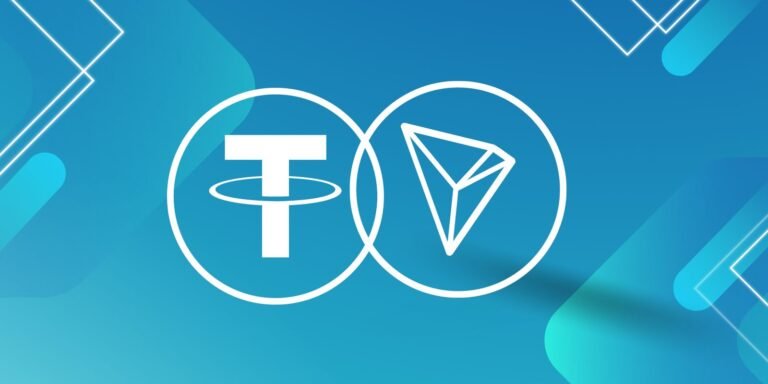Table of Contents
ToggleYou may have noticed that a handful of cryptocurrencies are starting to make their way into the mainstream. Ever since Bitcoin made its grand entrance, there has been an influx of digital currencies that have tried to capture the public’s attention. However, some crypto coins go beyond just the technology used to power them.
Two of these more advanced coins are ERC20-USDT and TRC20-USDT. Both are technically classified as stablecoins, but there are some subtle differences between them. In this article, we’ll take a closer look at both USDT and TRC20-USDT and discuss their major similarities and differences so you can decide which one is right for you.
Introduction
What’s the difference between ERC20-USDT and TRC20-USDT? As a cryptocurrency enthusiast, you may have noticed the increasing popularity of USDT and wondered why anyone would bother with a different version. What sets it apart from its predecessor and what makes it unique?
In this article, we’ll break down the distinctions between USDT and TRC20-USDT to give you a better understanding of how they differ and why they both have their place in the world of cryptocurrencies when you decide to buy or sell USDT in Dubai. We’ll take a close look at the technology behind each, how they function, and what makes them different. We’ll also talk about why it matters which one you choose, and how to decide which option is best for you. By the end of this article, you should be able to make an informed decision about whether or not USDT or TRC20-USDT is right for you.
Overview of USDT and TRC20-USDT
You may have heard of two types of digital assets, called ERC20-USDT and TRC20-USDT, but what is the difference between them? Here’s a quick summary of the two.
ERC20-USDT is the original version of USDT, and it is built on top of the Bitcoin network. It’s a stablecoin, meaning its value is pegged to the US Dollar and it’s used to facilitate cost-efficient cross-border payments.
TRC20-USDT, on the other hand, is a newer version of USDT which was created using the Tron blockchain network. It provides faster payment processing speeds compared to USDT, plus it also supports more features such as smart contract capabilities.
In short: while both versions are pegged to the US Dollar, they are developed on different networks with different features. So if you need fast payments and smart contracts support, then you should use TRC20; otherwise, you can stick with regular USDT.
Advantages and Disadvantages of USDT
Both USDT and TRC20-USDT have their own unique advantages and disadvantages. When it comes to USDT, it’s an ERC-20-based stablecoin backed 1:1 with the US dollar, making it relatively fast and cheap to transfer. However, because it’s based on the Ethereum network, transaction speeds can be slow when there is high congestion on the network.
On the other hand, TRC20-USDT is based on the Tron blockchain and has higher transfer speeds than Ethereum-based USDT. Additionally, while both versions cost very little to transact with less than one cent each time you send funds, fees are lower with TRC20-USDT than they are with Ethereum-based USDT.
Despite its advantages over Ethereum-based USDT, TRC20-USDT has one major downside—less liquidity than its ERC-20 counterpart. This means that users of this token may have difficulty finding someone to trade with them or getting the tokens listed on an exchange.
Advantages and Disadvantages of TRC20-USDT
So what are the advantages and disadvantages of TRC20-USDT? Let’s take a closer look.
Advantages
TRC20-USDT has several benefits, including:
- It offers faster transaction times than traditional USDT.
- It can be used for transferring small amounts of money without large fees.
- It is more secure than many other cryptocurrencies, with its immutability providing the basis for trustless transactions.
- It is more interoperable than other stablecoins, allowing for payments across multiple blockchain networks with ease and cost-efficiency.
- Its smart contract capabilities provide additional security against fraud and manipulation, as well as added flexibility for transactions on the blockchain.
Disadvantages
Despite these advantages, there are some potential disadvantages to using this version of USDT that should be considered before investing in it:
- Its liquidity is not as high as other tokens because it’s still a relatively new asset in the marketplace
- The fact that it’s built on the Tron network which has its own challenges may result in lower adoption rates compared to other blockchains with more robust infrastructure and applications available on them (such as Ethereum).
- Users may have difficulty understanding and navigating its features due to the complexity of its technology.
Which USDT network is best?
It’s clear that Tether (USDT) is a popular form of cryptocurrency, but which type of USDT should you use?
Your decision comes down to whether your priority is speed and cost, or interoperability. USDT on the Omni protocol offers more stability but has restricted options for transferring and interacting with other networks. On the other hand, the TRC20 version provides more interoperability with Ethereum-based projects, allowing for faster transactions at a lower cost.
So which USDT network should you use? It all depends on what you need out of it and what your goals are. If you plan on transferring currency regularly between different networks or are looking to perform small payments quickly and cheaply, then TRC20 may be the better choice. However, if long-term storage or global payments outside of Ethereum are your priority, then Omni may be preferable for its reliability and stability.
Weigh up both options: Omni and TRC20 — look at the advantages and disadvantages of each one and decide which one makes more sense for your individual needs.
Who Backs USDT?
So, who backs USDT coins? It’s a valid question—after all, not all USDT coins are created equal.
The original USDT was released by Tether, a company that issued USDT (backed by the US dollar) on the Bitcoin blockchain via the Omni protocol—which means that it is a type of cryptocurrency asset, but it is pegged 1:1 to the US Dollar. On the other hand, TRC20-USDT is issued by an independent company called TRON—and while it still claims a 1:1 peg to the US Dollar, it’s issued on TRON’s blockchain instead of Bitcoin’s.
But while they have different issuers and run on different blockchains, they both serve as a representation of fiat currencies such as the U.S. dollar and Euro. This means you can use both variants to hedge against price volatility and buy goods or services from merchants who accept these assets in payment.
Who supports TRC20-USDT?
An important difference between ERC20-USDT and TRC20-USDT is who supports them. Whereas USDT was created by Tether Ltd., TRC20-USDT was created by the Tron Foundation. This means that each of these tokens is supported differently, and has different features and requirements.
TRC20-USDT is backed by Tron’s Blockchain, which means it has everything that the Tron Blockchain has to offer. To use TRC20-USDT, you’ll use the TRX token—which is the native token of the Tron Blockchain—to convert your funds into this type of USDT. Furthermore, this coin also requires fewer confirmations for processing transactions on the blockchain.
ERC20-USDT, on the other hand, is a stablecoin issued on various blockchains like Bitcoin and Ethereum, and it’s not supported by any particular platform. That said, it can be used across crypto exchanges as well as traditional banking systems due to its high liquidity and relative stability.
At the end of the day, both tokens are useful for different purposes—it just depends on what type of transaction you want to complete. With so many options available today, there’s bound to be a solution for everyone’s needs!
Who owns USDT coins?
An important difference between ERC20-USDT and TRC20-USDT is who owns the respective coins.
USDT
USDT tokens, issued by Tether Limited, are backed 1:1 with the U.S. Dollar. That means that one dollar is held for every USDT in circulation—so when you purchase a USDT token, you are actually buying a U.S. dollar which is held in reserve by Tether Limited.
TRC20-USDT
Unlike the regular USDT coins, those issued via TRC20 are not “backed” by the U.S Dollar but instead by the native token of the Tron blockchain (TRX). So when you purchase one of these coins, you don’t have a dollar held in reserve—you have a TRX held as collateral instead.
The key difference here is that while regular USDT tokens are backed 1:1 with fiat currencies like the U.S Dollar, EUR, and GBP—USDT_TRC20 tokens are backed 1:1 with TRX tokens only. Therefore, if you want to make a purchase using this type of coin, you will need to make sure that you have enough TRX in your wallet to cover it!
ERC-20-USDT or TRC20-USDT?
So how do you choose between ERC20-USDT and TRC20-USDT when you want to buy USDT in Dubai? That’s a great question, and one with a few answers.
Its Origin
USDT was initially based on the Bitcoin network, while TRC20-USDT was built on the Tron network. This difference in origin means they may differ in terms of supply, speed of transactions, and more.
Supply Capabilities & Transactions Per Second
USDT has a circulating supply of 4.2 billion tokens, while TRC20-USDT has a circulating supply of 36 billion tokens. Plus, TRC20-USDT offers 2000 transactions per second (TPS), while USDT can only process 100 TPS and Bitcoin can process just 7. This makes TRC20-USDT the preferred choice for larger and faster transactions over smaller ones.
At this point, it’s clear that the two stablecoins have their own specialized use cases — so it’s best to take into consideration both the size of your transaction and the speed at which you’d like it to be processed when deciding between USDT or TRC20-USDT.
Conclusion
In a nutshell, while they are both in the same stablecoin family, ERC20-USDT and TRC20-USDT are not interchangeable due to their different underlying technologies. Therefore it’s important for you to understand which one you should use for your needs—as well as the implications of choosing one over the other.
Knowing the difference between ERC20-USDT and TRC20-USDT can help you make more informed decisions about which one to use for a given transaction. TRC20-USDT is advantageous for its faster transaction speeds, but USDT is advantageous for its stability since it is backed by real currency. Ultimately, the choice between the two comes down to what type of transaction you are hoping to conduct. In any case, the choice of which stablecoin to use should always be determined by a comprehensive assessment of its advantages and disadvantages.





